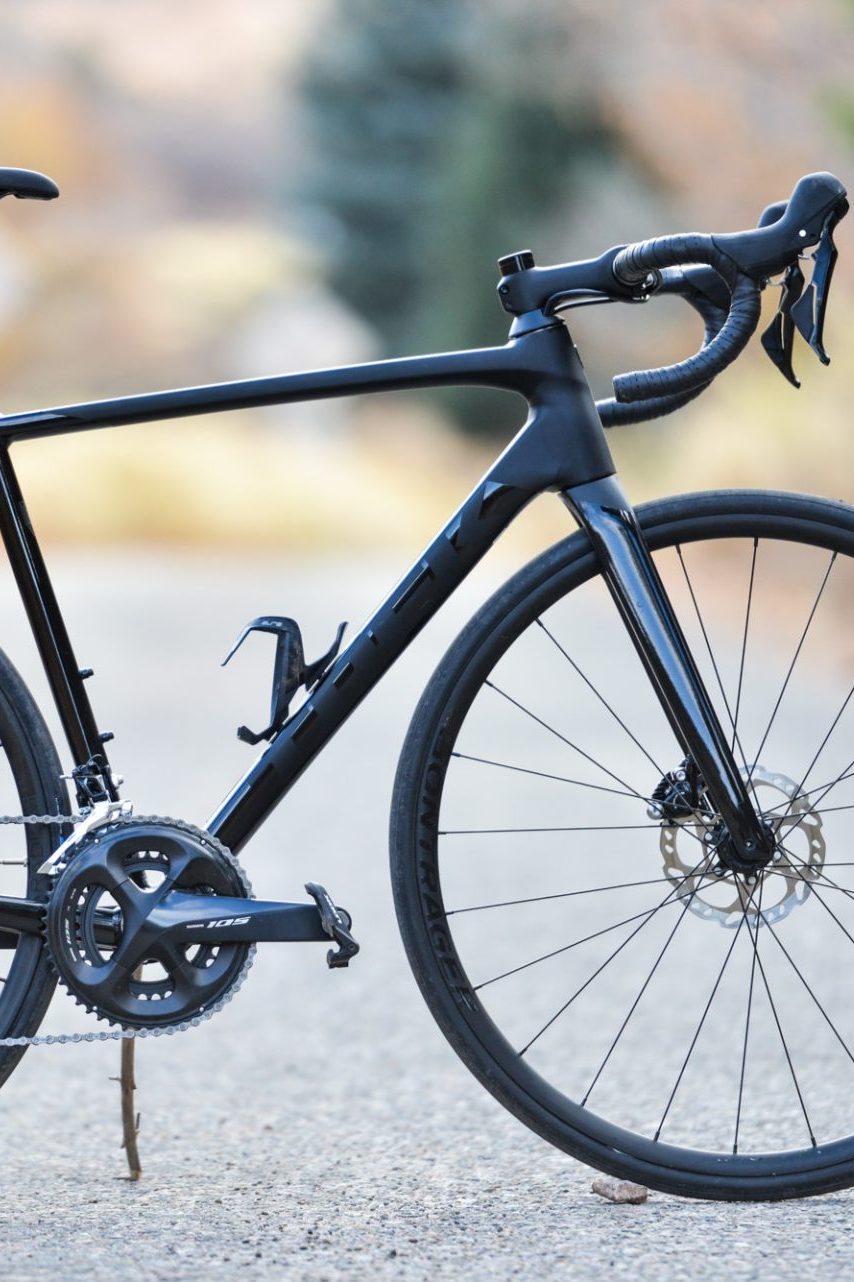I dream of aluminum race bikes. Sturdy, fast, cheap. They’re what most amateur bike racers should be on, if you ask me, but the options are vanishingly few.
There’s the Specialized Allez Sprint, the current king of the castle, but it’s a $1,700 frameset and is often out of stock. The Cannondale CAAD13 is lovely too, but has been taken about two steps too far away from its racing roots for my liking. Now there’s a third big-brand aluminum option: the Trek Emonda ALR 5.
I hoped for a bike I could feel confident in recommending to any young or aspiring racer. Something nimble and light, with the right gearing, a ride comparable to carbon, a few nods to modern-day aerodynamic understanding, and clever spec. Not a first road bike, perhaps, but something worth graduating to. Trek came so very close.
This is a bike that will roll off showroom floors for just over $2,000 and looks every bit like a bike three or five times that. The integrated front end, the shapely tubes – from across the street it looks like carbon.
The Emonda ALR is a cool aluminum race bike. Looks good and rides well. It needs a few tweaks if you really want to get the most out of it, but it’s 90% of the way there straight out of the box. It only misses in a few spots, and that might not even be its own fault.
The short of it: A good argument for not buying a cheap carbon road bike instead
Good stuff: Superb ride quality, excellent handling, great looks
Bad stuff: Weight
Total weight: 9.12 kg/20.1 lbs
Price: USD $2,300 / AUD $3,000 / £2,150
The frame
As aluminum frames go, this one is both good-looking and well-thought-out. It uses Trek’s 300-series Alpha Aluminum and what Trek calls “Invisible Weld Technology,” which smooths out the welds themselves and provides a decidedly carbon-like look. More than one person thought I was on a carbon bike.
The tubes are hydroformed, a technology that has now been in the bike industry for well over a decade but is crucial to creating the types of tube shapes Trek uses on the Emonda. There are nods to aerodynamics, including a truncated seat tube, big and shapely down tube, deeper head tube, and dropped seatstays. The intention isn’t to compete with the best aero bikes on the market, but a bit of aero efficiency never hurts.
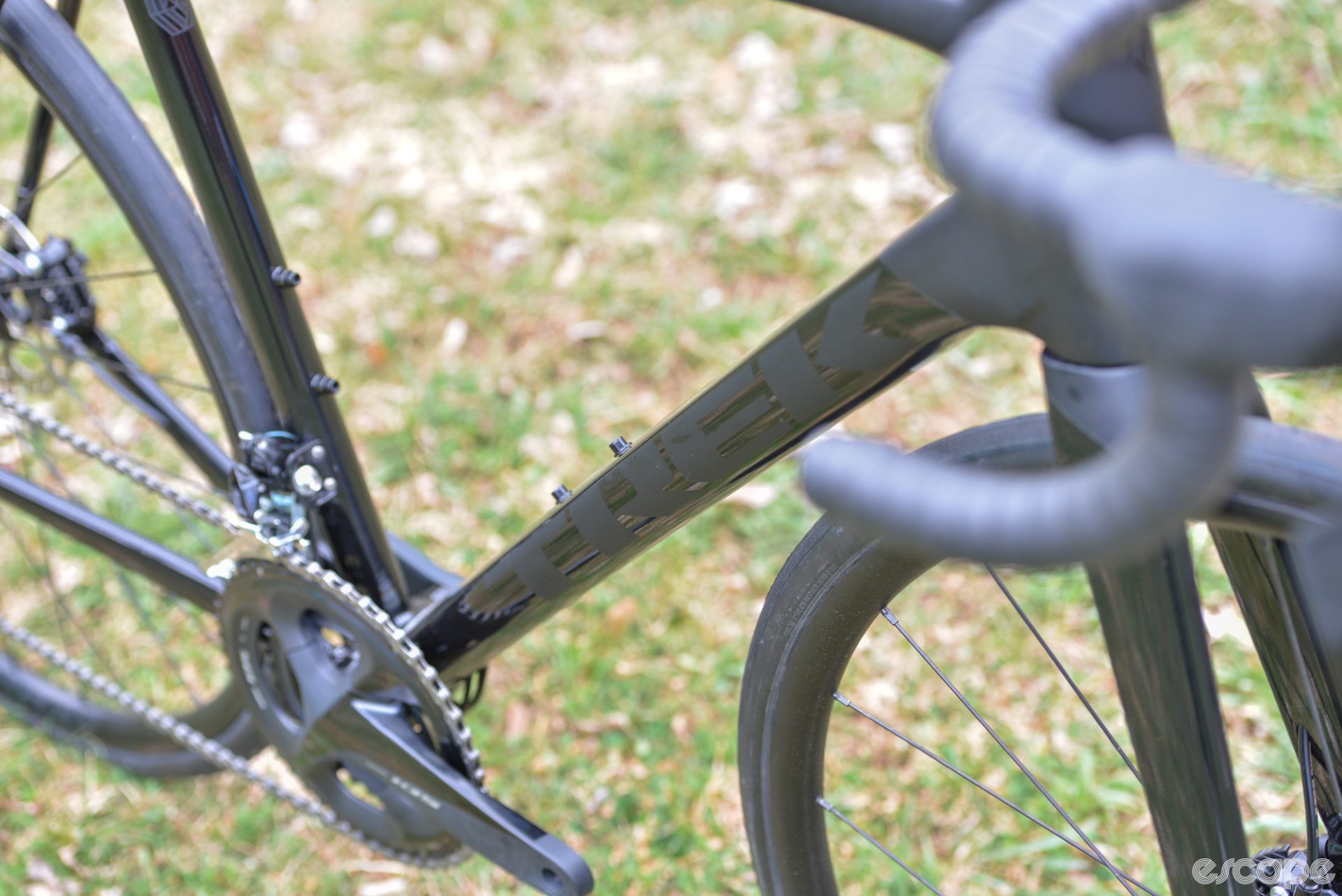
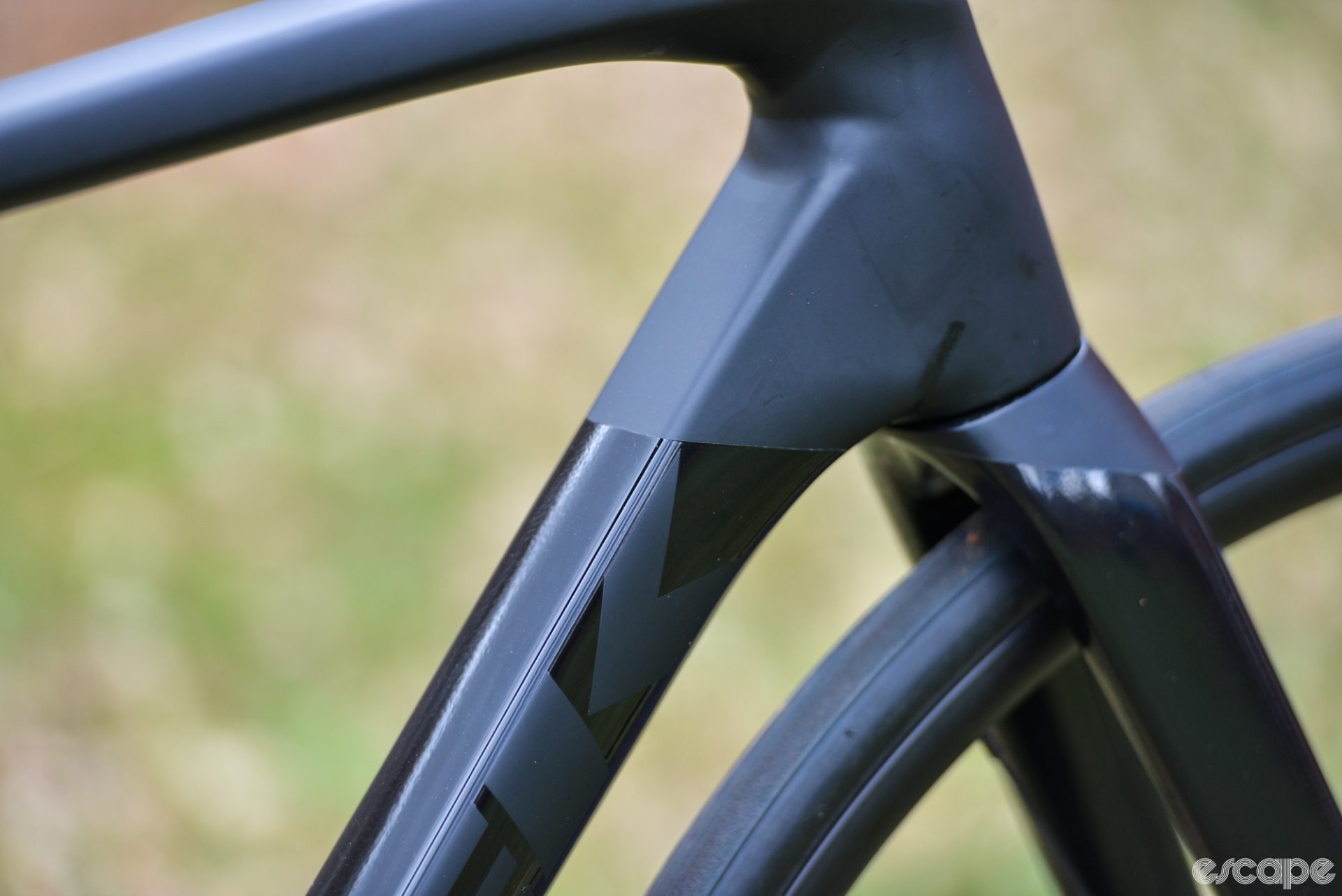
The frame is light, around 1,260 grams, plus a 400-gram carbon fork. That makes it roughly the same weight (within 50 grams) as the carbon fiber Emonda SL, which sits on the lower end of Trek’s carbon spectrum. And a complete Emonda ALR 5 bike costs as much as the Emonda SL frameset. Behold, the power of aluminum.
Down at the bottom bracket, Trek has gone with the threaded T47 standard, which we have no real problems with. James Huang is a big fan. Dave Rome is sort of ambivalent. I just know it didn’t creak over the last 6 months.
I wish the Emonda ALR had more official tire clearance. This may partly be a limitation of aluminum, but in the end, it’s a decision. The aluminum Domane fits a 40 mm tire. The Emonda ALR will officially only take a 28 mm tire. Now, if you know Trek, you know they have an exceptionally conservative legal department, and you can generally go 4+ mm wider than claimed. But the rear end, in particular, is tighter than I’d prefer on the Emonda ALR. I wouldn’t be comfortable with anything over a 30 (measured). The fork has plenty of room for a 30 or slightly larger. Just know that you’re running afoul of Trek’s official recommendation if you do this, potentially harming things like warranty, which is a shame.
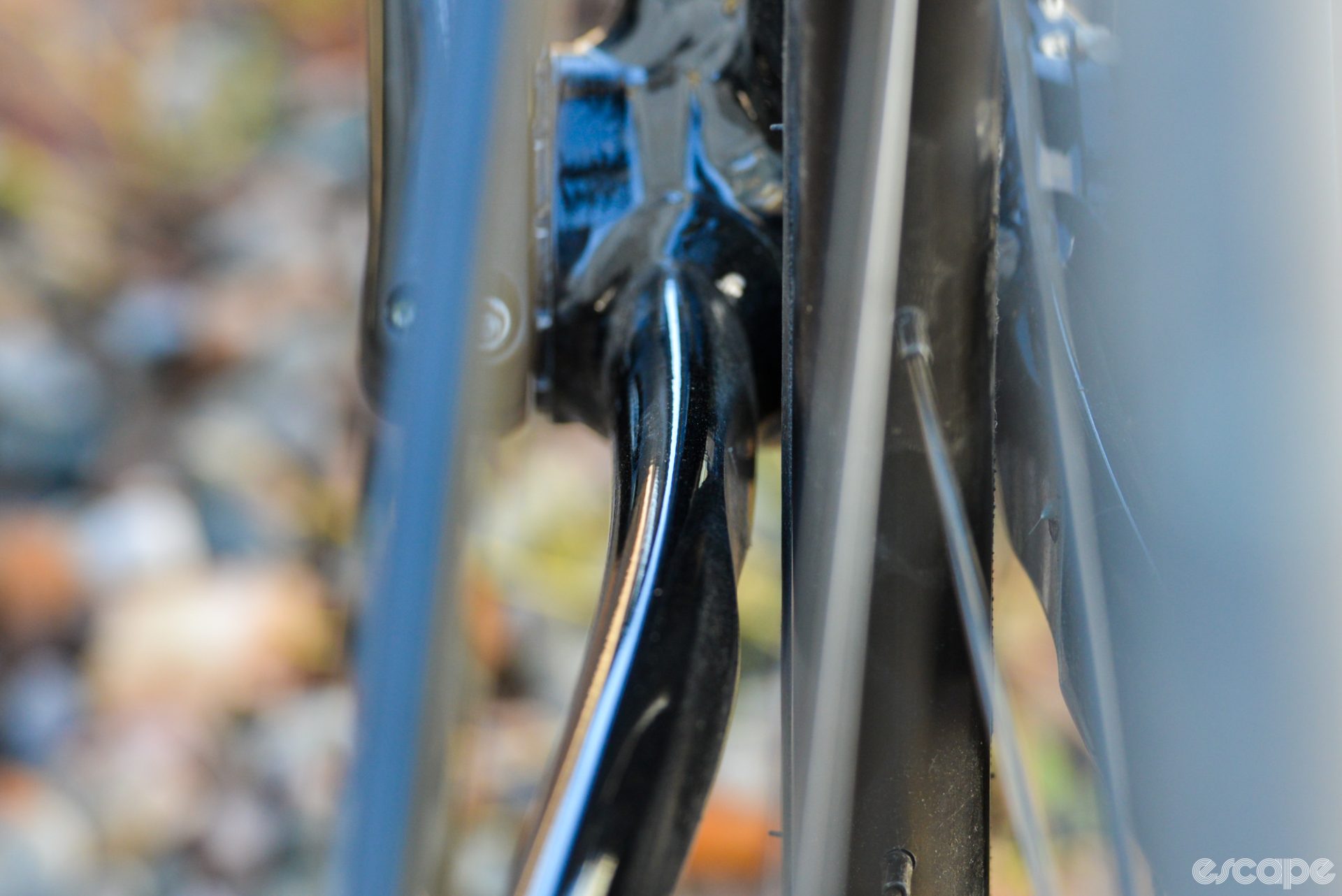
Any modern disc road bike should clear a 30 with no concerns whatsoever. Only 28 is just not enough. Not when pros are winning Milan-San Remo on tires that measure closer to 32. A race bike can and should have clearance for 32s these days.
Aaargh, integration
I appreciate the thought and care Trek put into bar/stem/brake line integration on this bike. If integrated front ends are truly what consumers are looking for – and the fact that every single road brand is integrating more and more suggests that purchase data shows people want it – then why should we limit such things to the realm of the carbon fiber bourgeoise?
The plebs down here plowing fields in Aluminum Land deserve a clean cockpit too. The Emonda ALR looks great, it looks expensive, and part of that is the fact that Trek bothered to put the front end together with as much thought as they do for bikes five times the price.
The Emonda ALR runs its brake and shift lines through an entryway at the front of the headset and then down through the frame. All the lines and housing exit right before the bottom bracket and then re-enter behind it. The headset routing is very similar in concept and execution to the design found on the Allez Sprint, though everything stays internal near the bottom bracket on the Specialized.
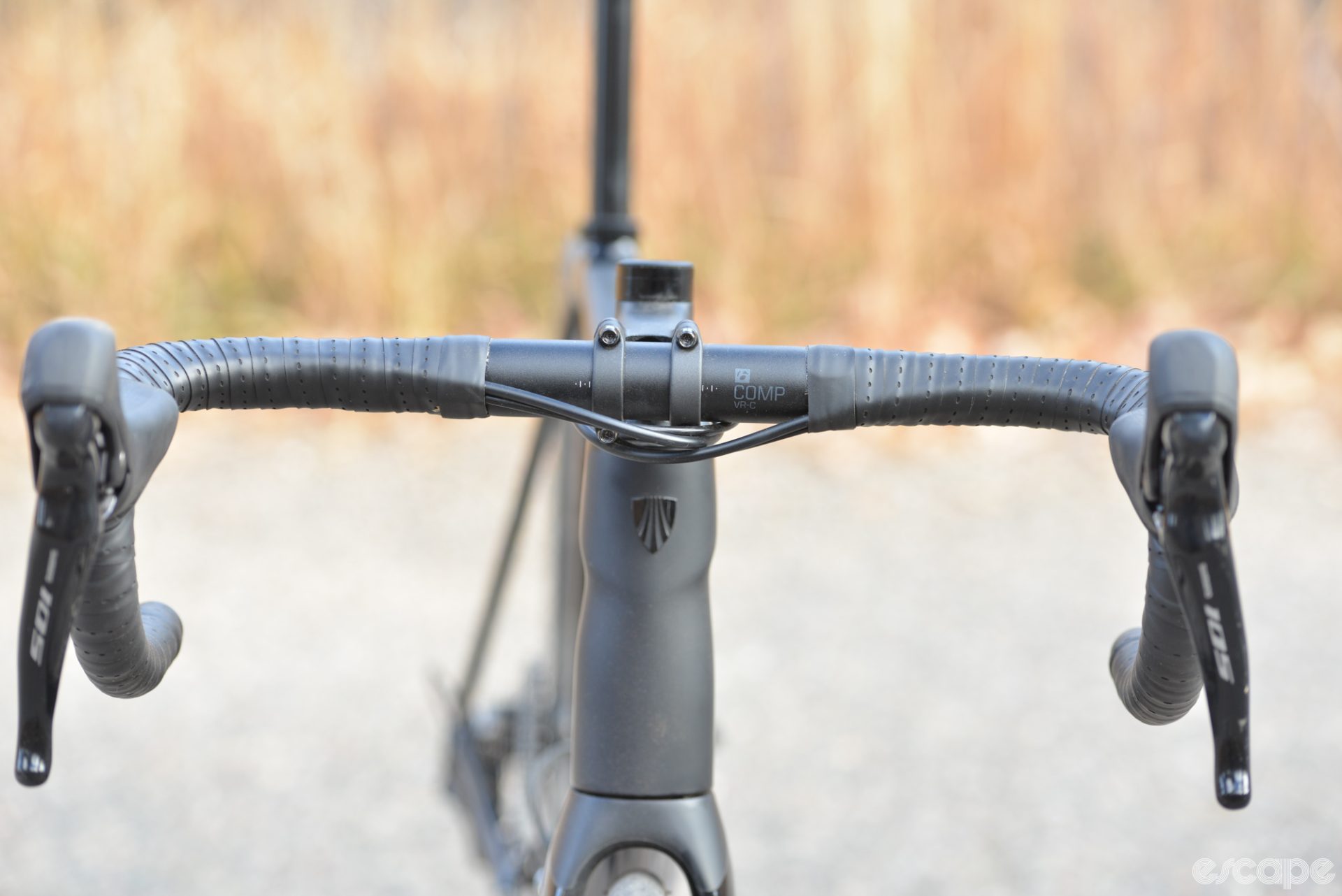
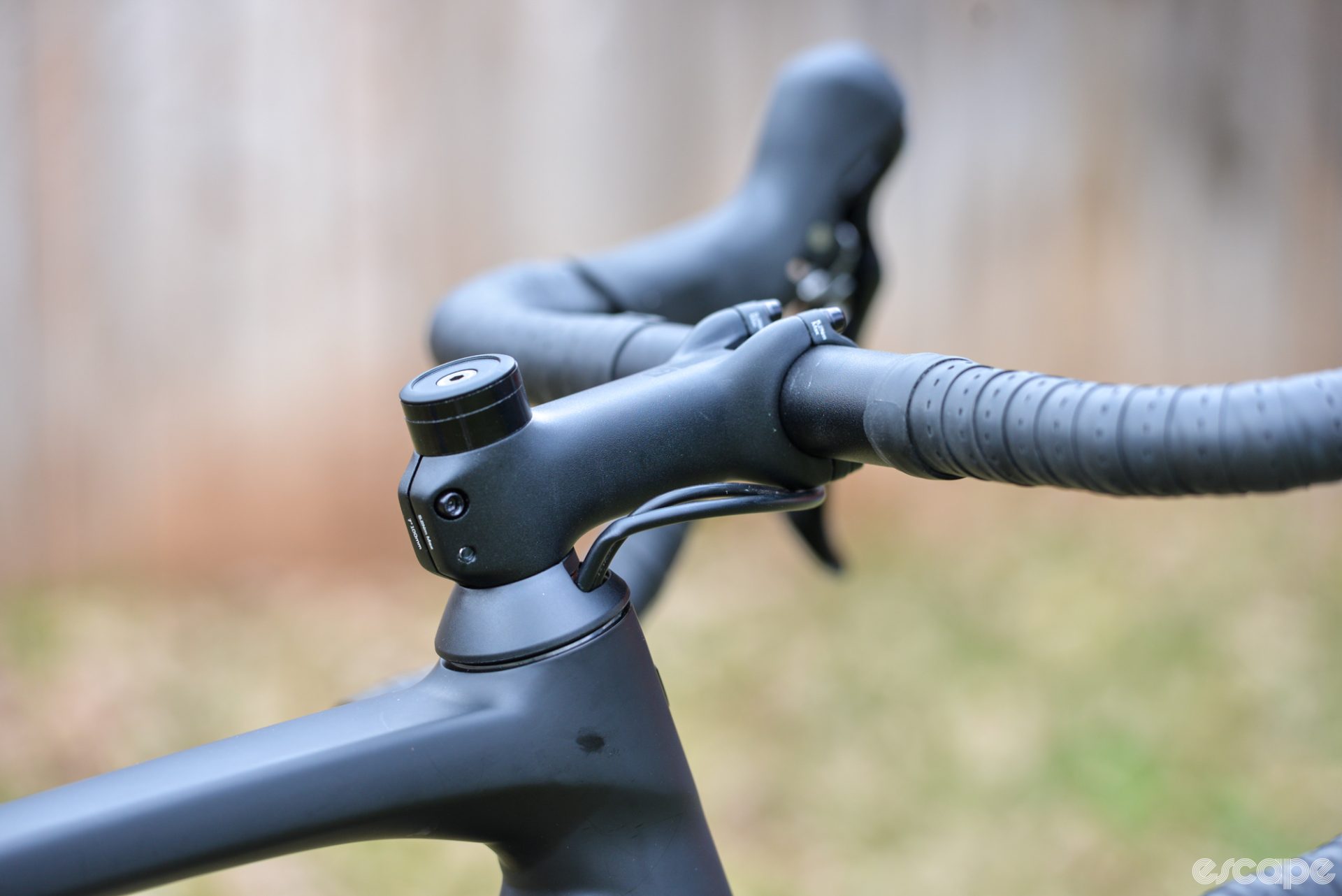
There are six full pages in the manual dedicated to the headset, brake line routing, proprietary spacer stacking, and all the rest. The fact that James trusted me, the Hammer, to sort this out and put things together properly is a testament to both his trust and his foolishness. Or perhaps this was his plan all along, to put the design to the ultimate test.
Mercifully the Emonda came mostly built. Unmercifully, it also came with a kinked brake hose right out of the box, which required replacing. And, of course, I would have to do some basic fit adjustments. The kinked line ended up being quite annoying but the fit changes were no big deal.
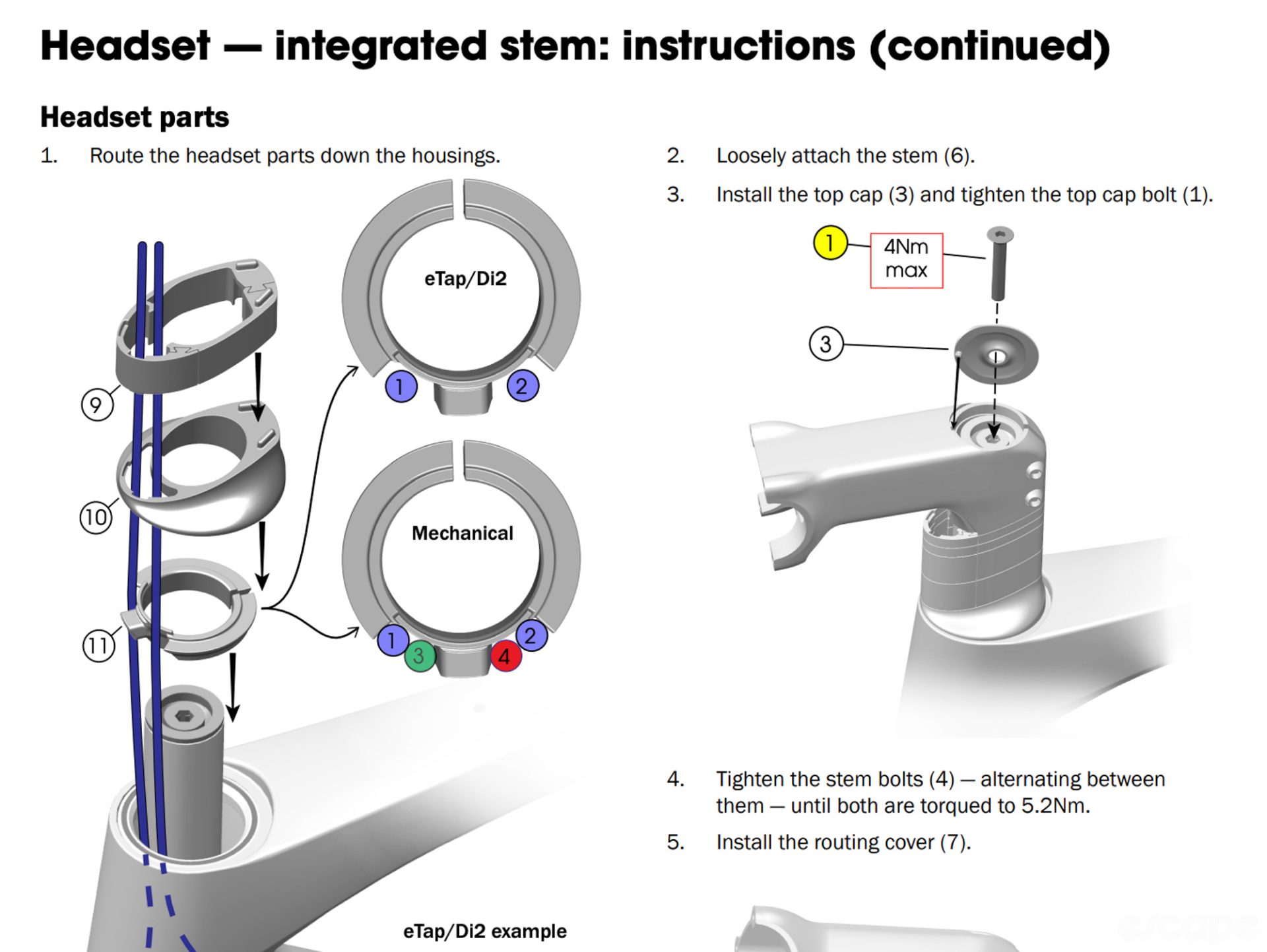
The brake lines run down in front of the steerer tube, in between the slightly bulbous head tube and the steerer itself. There are proprietary split spacers to be used instead of round ones. Pulling it all apart and getting it back together is finicky but not impossible, and dropping the bars two cm took less than five minutes. The spacers are annoying relative to some good old-fashioned round ones, but they also allowed me to play with stack without having to run new brake lines.
As internal brake and shift lines go, this is about as good and easy as it gets.
In the end, I ditched all of the spacers and ran the stem “slammed” because the H1.5 geometry (more on this later), in addition to the height necessitated by the cable-entry cap, meant that slammed wasn’t actually that aggressive.
You can use standard round spacers above the stem as you move the stem clamp down the steerer, should you so choose. The sleeker look obviously requires cutting the steer at the new stem height, but for the purposes of setting fit – and because this isn’t my bike – it was nice to be able to throw the ol’ roundies I had floating around my toolbox on the section of steerer above the stem.
Now, the kinked line. This isn’t really Trek’s fault, except that I’m pretty sure a line that had more than a few short centimeters exposed between the frame and stem probably wouldn’t have had this problem during shipping. Keep that in mind if you travel with this bike: anything with this level of integration needs added care in packing because with such short exposed sections of brake line, the margin for error is smaller.
Replacing the line was quite straightforward. Lines run down the front of the head tube, inside the upper headset bearing, and then, in this case, down to the front brake via a port in the steerer itself. It all guided through pretty easily. Re-attach, bleed, and I was off to the races. The rear brake would take slightly more effort, as it needs to be fished through a hole near the bottom of the down tube and then on through another set of holes to the caliper, but it’s no worse than any other integrated bike out there right now.
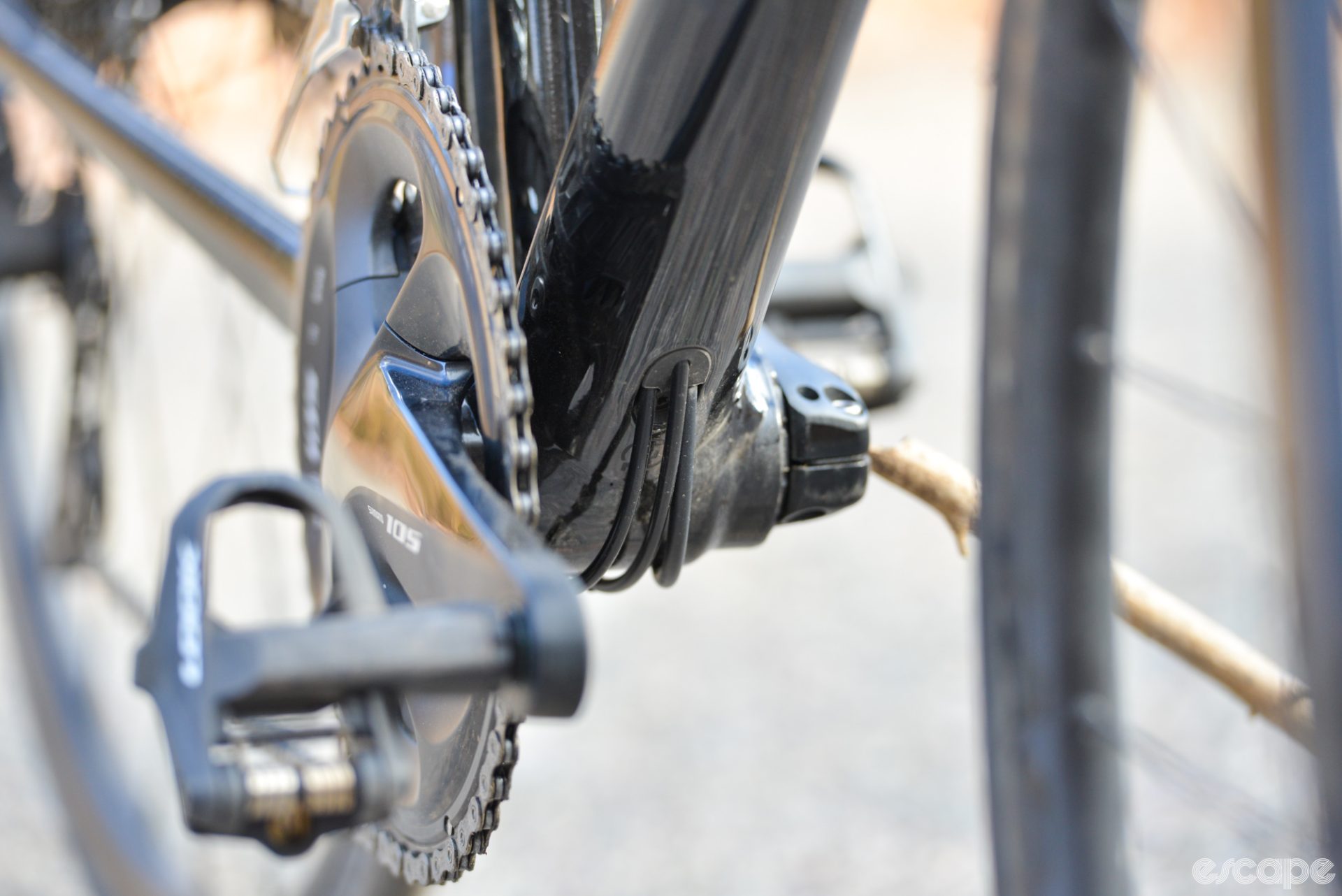
Geometry chart
The Emonda ALR uses the same H1.5 geometry as the latest Madone SLR and carbon Emonda options. It sits, as the name implies, about halfway in between the race-focused H1 geometry and endurance H2 geometry.
It also sits right in between two of its competitors in this space, the Specialized Allez Sprint and the Cannondale CAAD13. The Allez is more aggressive, the CAAD a bit less so.
Here’s the full chart:
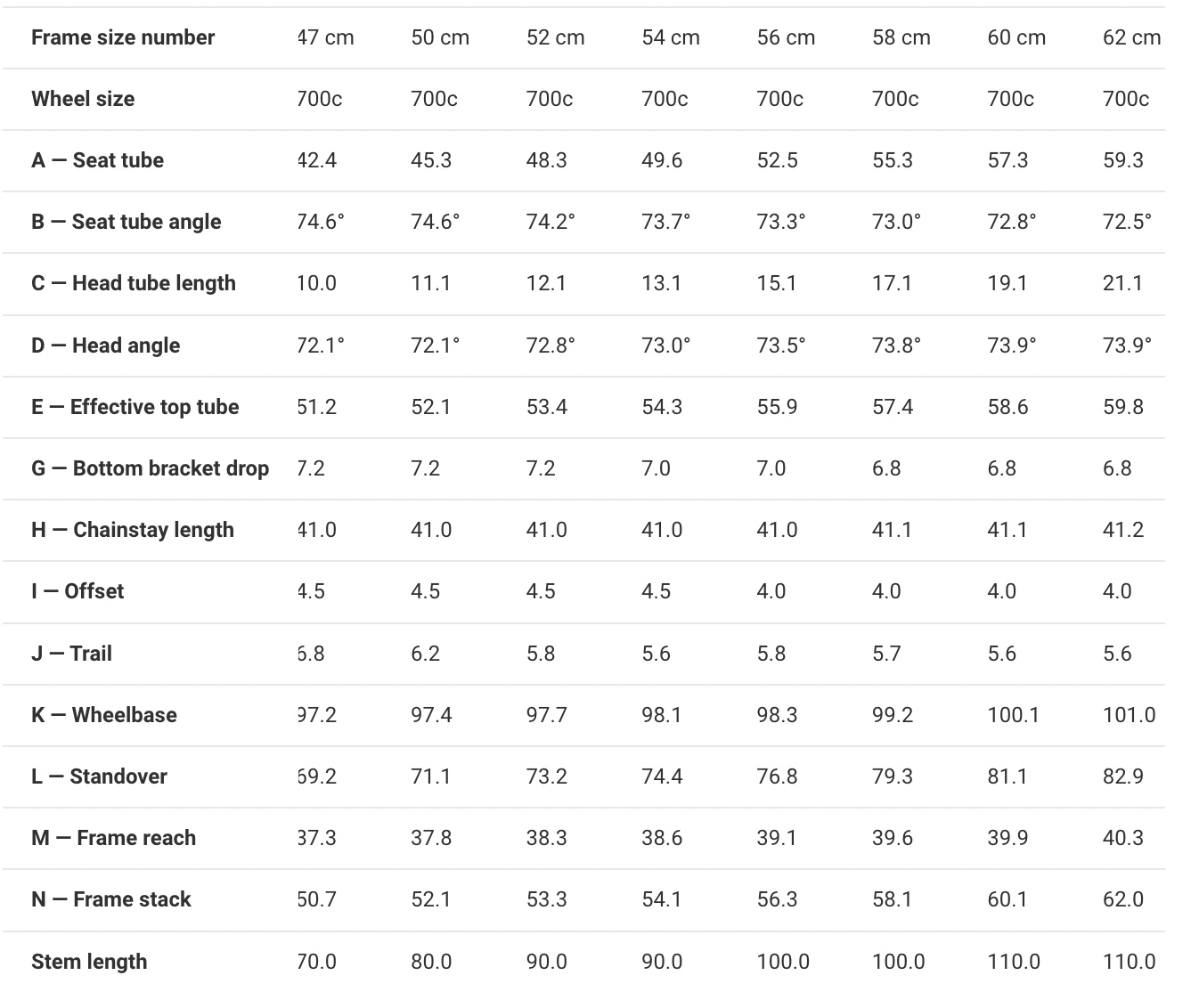
I’ll talk about the ride and handling in a moment, but a couple of things to note. The trail is a very standard 56-62 mm for most sizes. The smallest riders, as usual, get absolutely hammered with a 68 mm trail that I’m sure makes the bike feel absolutely nothing like the one I rode (a 56 cm). Sorry, anybody riding a 47 cm.
Wheelbase is about one cm longer than the Allez Sprint, trail is a bit higher, reach is shorter, stack is higher. All these things point to a less race-oriented machine. And that is the case, though not to the point that the Emonda isn’t totally race-worthy. It absolutely is.
Models and pricing
Normally, we drop all the other build options for a given frameset in this section, but because this is an aluminum bike and so few people apparently want aluminum bikes anymore, there are no other build options.
At least, that’s true in the US. The UK market has the ALR 6, which upgrades the 105 mechanical to 105 Di2 for a marginal increase in cost to £2,400. And in the US you can buy framesets on their own for USD $1,200. These have some great paint jobs and would be a fun project.
In fact, if you’re comfortable building bikes from scratch, that’s probably how I would do it. These are really cool frames, extremely well thought out, light, and quite beautiful. But the stock build kits are uninspiring, because Trek had to hit a price point. I would love to take one of these and slowly build it with higher-end second-hand parts over the course of a winter. Total cost would be similar, but you’d end up with a much cooler end product.
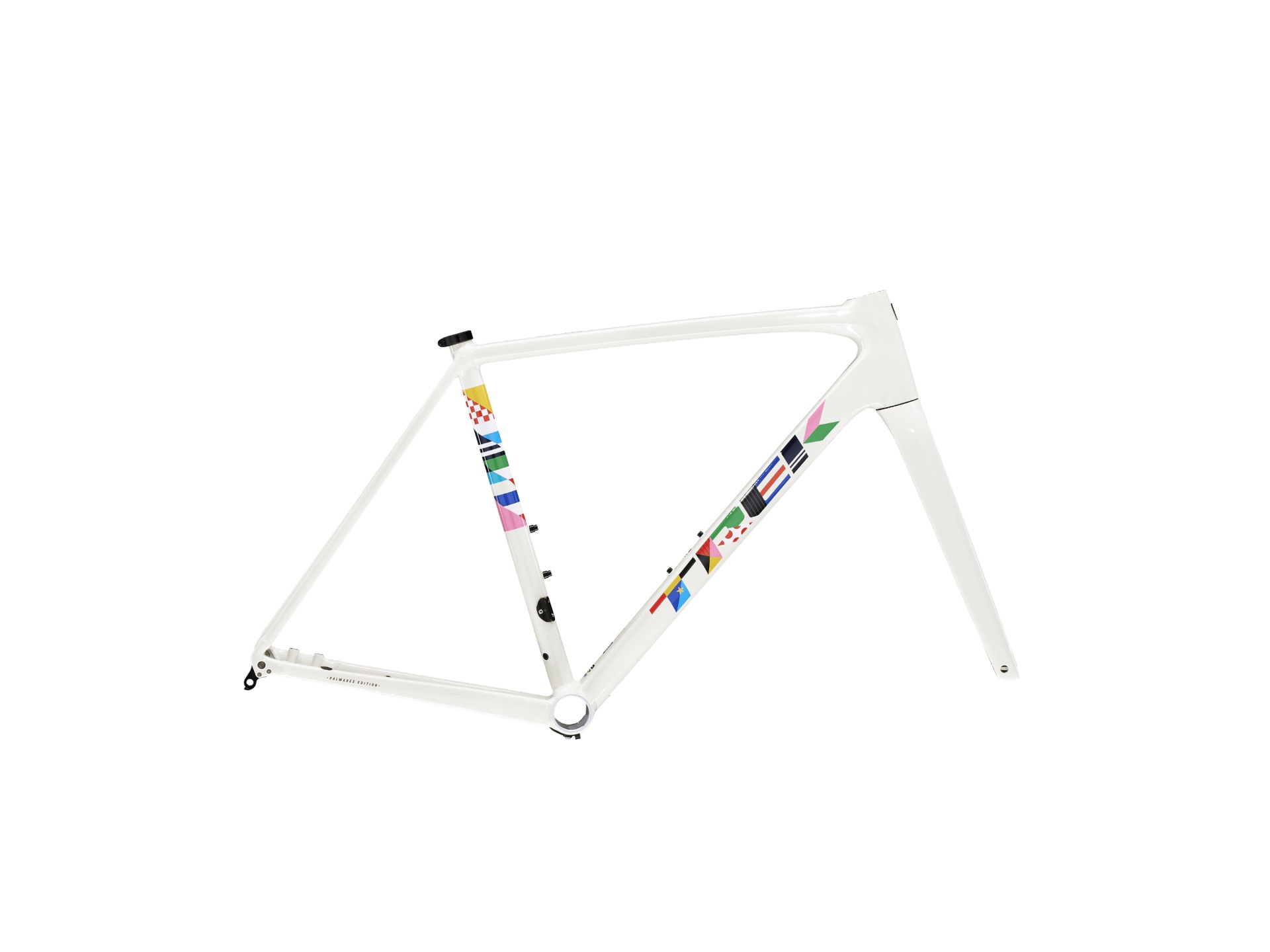
As a brief experiment, I put myself into character. The character: me, 20 years old, racing crits every weekend, living on like $700 a month plus race winnings, with $3,000 left over from my student loans. Decison-making: Generally terrible. Acknowledgment that the future exists: Never. FTP: High as it’ll ever be.
I popped around the usual buy/sell sites and checked out some deals on groups to see what I could build. This is what I came up with in less than 30 minutes (all prices USD):
Frame: Emonda ALR in one of the cool colors – $1,200
Drivetrain and brakes: Shimano 105 7000 – $700
Wheels: Something carbon that makes a good whoosh noise – $650 on eBay or similar if you’re willing to buy something that isn’t tubeless compatible (go latex tubes for racing instead)
Handlebar: Ritchey WCS Neoclassic drop – $99 (eBay)
Stem: Ritchey WCS 4-axis – $25 (eBay)
Seatpost: Ritchey WCS – $74 (eBay)
Saddle: Bontrager Aeolus Comp: $90
Tires: Vittoria Corsa Control 30mm – $35 (not the tubeless version)
Total: $2873 plus $100 or so for cables/housing/other odds and ends. This bike is easily 2.5 pounds lighter than the stock ALR5, makes a better noise, looks cooler, and leaves me about $100 of student loan funds to spend on a week’s worth of post-ride burritos.
Build kit breakdown
My collegiate-racer fever dreams aside, the ALR 5 has a solid, reliable build. It’s a good platform to upgrade off of, if that’s your jam, and it’s perfectly serviceable right out of the box.
I have zero complaints about the Shimano 105 7000 mechanical drivetrain. It shifts, it’s quiet, it’s relatively cheap. There’s absolutely nothing wrong with it.
I do dislike the rotors, which are the RT70 from Shimano. They are ugly and look cheap. Give me some of that finned goodness. This is 90% aesthetic but aesthetics matter.
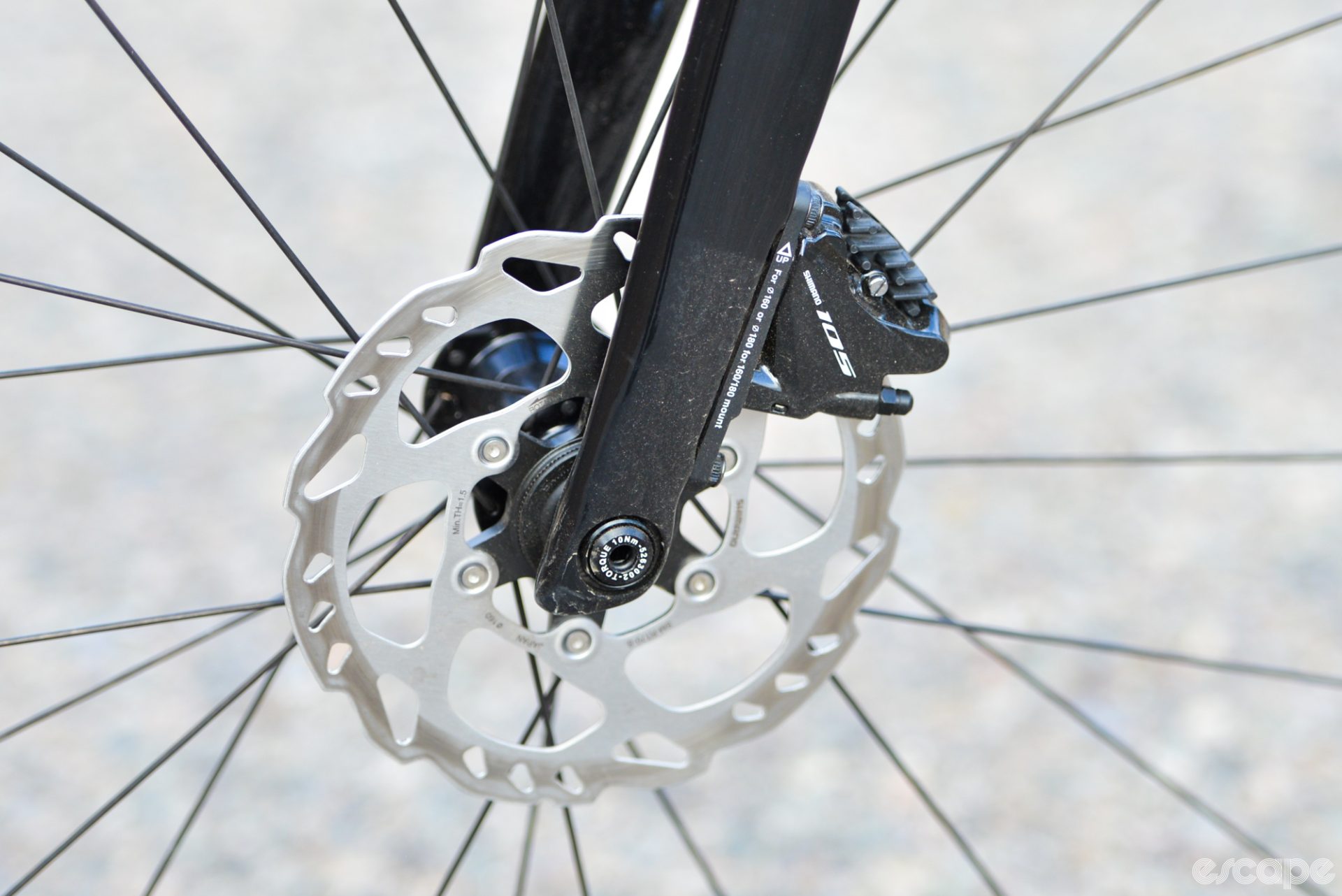
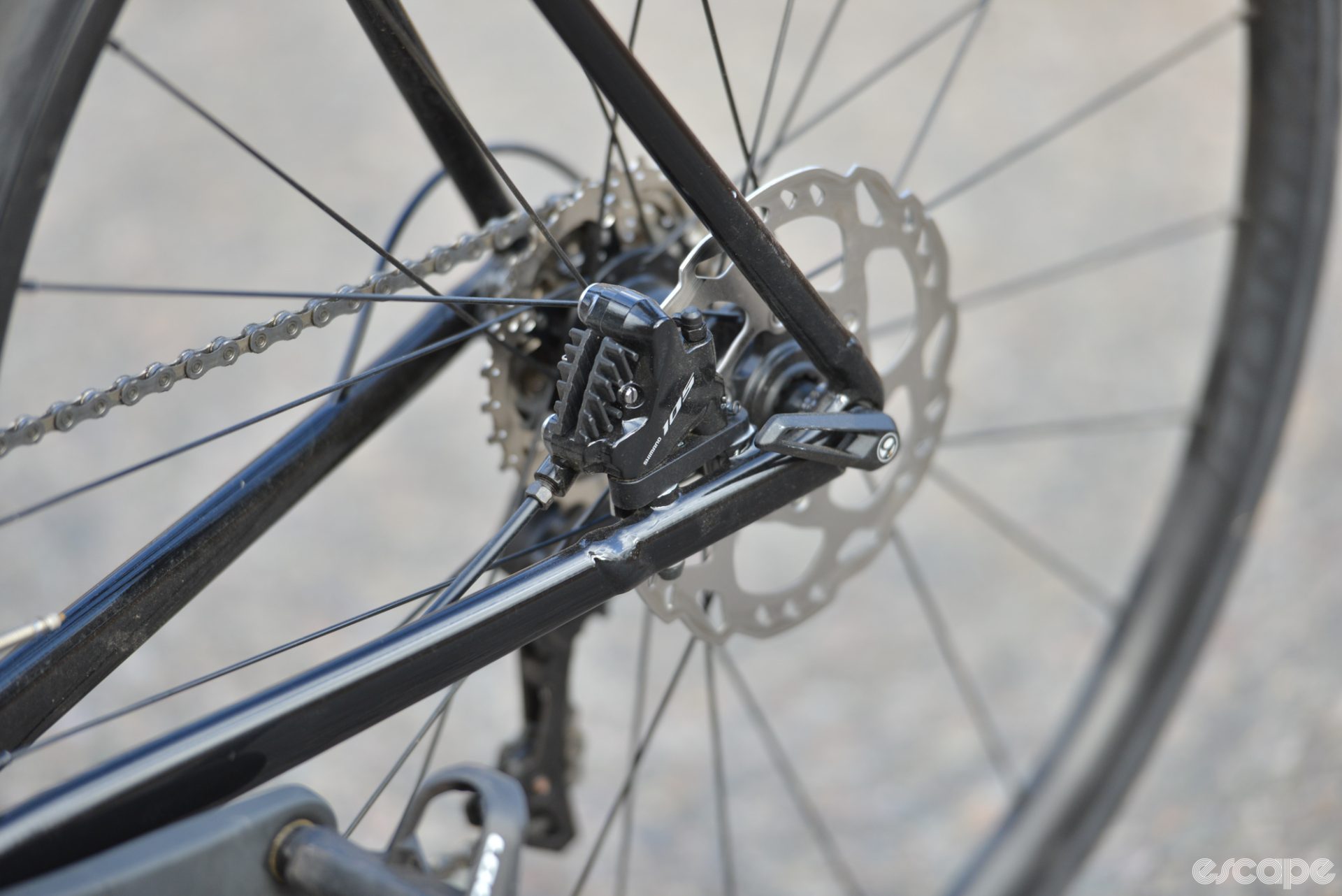
The stock gear ratios should be enough for most, but could perhaps go a bit lower if you live somewhere hilly. A 50/34 front chainring setup is matched with an 11-30 cassette. Ten years ago, that would have been ludicrously low, but the bike industry has since realized we’re not all riding around at pro watts all the time, and these days I’d prefer a 32 or even 34 low gear on the back unless I’m racing.
If I am racing, I probably want a 52/36 with that same 11-30 cassette. But that’s a low priority and can be upgraded later.
The rest of the build is uninspiring but adequate. Trek’s component brand Bontrager provides the seatpost, saddle, stem, and handlebars. All are alloy, all are a bit heavy. The Comp VR-C bars have quite a nice bend to them, on the shallow end of the spectrum but not silly-shallow. The transition from hoods to tops is nice and smooth and the drop curvature is superb. I found them very comfortable.
There are no surprises, integration headaches, or odd standards, just a 27.2 seatpost, 1 1/8″ steerer, and round bars. All of it can be easily upgraded or swapped out.
The Bontrager Verse Comp saddle is too heavily padded for my liking. I did a couple of rides on it and it wasn’t terrible; it just wasn’t great. It’s also quite long, and I’m used to short saddles these days. Bontrager’s excellent Aeolus would have been a better match for the bike and its ambitions.
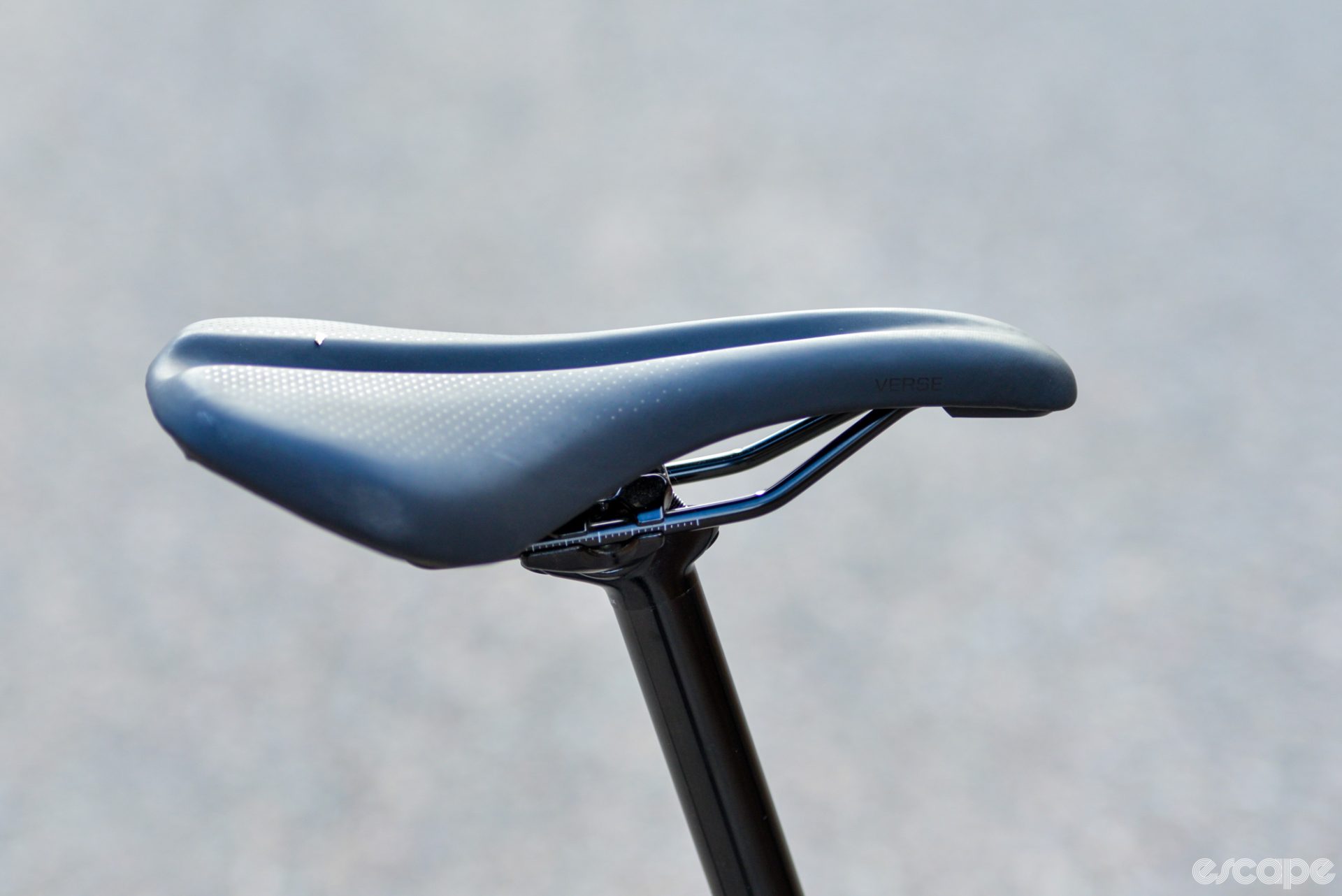
The Bontrager Paradigm wheels are heavy (roughly 1,750 g claimed) but do feature a nicely modern 21 mm internal rim width, which spreads the 700×25 hotpatched tire out to just under 28mm. The tires are Bontrager R1 Hardcase-Lite with a wire bead. They are hot garbage that should be removed immediately. Wire bead? Are you kidding me? Bontrager makes some nice tires these days; the R1 Hardcase is decidedly not one of them.
I took them off, riding only once on those turds of tires before swapping them out to a set of Vittoria Corsa Controls. I went from disliking the bike to liking it with that one switch. Tires are important. Granted, Corsa Controls aren’t cheap.

Ride report
That brings us to the ride. All of the figures and facts above combine in sometimes unexpected ways, mixing and melding into a ride quality that is genuinely quite impressive (once you take the terrible tires off).
I tested this bike with three sets of tires/wheels. First, the stock Bontragers. Awful. Second, the Corsa Controls and butyl tubes on the stock Paradigm wheelset. Great! A better bet would have been a good tubeless tire, since the Paradigm rims are tubeless-ready, but I didn’t have any handy that were narrow enough.
Finally, I put on a set of Continental GP5000s with latex tubes in on a set of Roval Alpinist carbon wheels. The Corsas alone dropped over 200 grams off the stock tire weight, and the Roval setup dropped more than a pound (626 grams, to be precise) off the stock setup. The overall change in ride quality from both changes was dramatic.
As a result, I’m going to ignore the stock tires for this ride quality analysis. The R1s are so bad, and tires are so important, that it feels unfair to besmirch an otherwise-good bike with their wire bead stink. If you’re reading this review, you care enough to swap them out. My opinions here are based on the stock wheelset + Vittoria Corsa Control + butyl tube setup.
This is a comfortable aluminum bike. Trek has lots of marketing copy on its website about how its hydroforming processes and the Invisible Weld Technology combine to allow its engineers to create a frame with significantly more compliance than the aluminum of old. I would say they aren’t lying.


The rear end, in particular, cuts road buzz nicely. The 27.2 seatpost helps, and if you upgraded to a carbon post it would further improve flex and thus comfort. The big aluminum handlebars are stiff and the front end feels harsher than the rear. I’m sort of OK with this; a stiff front end feels like it wants to race, to me, and I like that.
The size 56 I tested has a 73.5º head angle and 58 mm of trail. Both figures are about spot on for a bike that wants to be race-worthy but not race-only. The handling is therefore as I expected: predictable, on the twitchy end of the spectrum these days but nothing extreme. Ten years ago, this would have been called endurance bike geometry. But now we know better.
This is supposed to be a race bike, and nothing in the handling would prevent it from finding success there. It is not a pure crit machine in the way that the Allez Sprint is (that bike has a more aggressive trail figure of 55 mm, plus a lower BB and longer reach). The Emonda ALR is a road racer. It’s well-balanced and goes where you point it.
The rich get richer, the poor get heavier
Behind this generally positive review is an unshakeable feeling that something is missing. I’m not sure the bike I dream of, and that I was hoping the Emonda ALR would be, really exists anymore. In riding the Emonda ALR and perusing the other options currently available in the same price range, the only conclusion I can draw is that it’s very, very difficult for a big bike brand to build a cheap race bike these days.
The bike I want is a Cannondale CAAD10 from around 2015. The model with Shimano 105 went for about US$1,700 – roughly US$2,200 in today’s inflated money. In other words, nearly identical to the Emonda ALR 5. That bike weighed in the low-17 pound (7.7 kg) range. It had decent wheels and snappy handling and pretty much everybody who reviewed one or raced one called it some version of a superbike killer. It was so good.
The Emonda ALR is better in some ways. It’s more comfortable, for one. It’s probably more aerodynamic, simply because of the integrated front end, though we don’t have any figures to prove this. It fits a much bigger tire (albeit not big enough). But it also weighs closer to 20 pounds, has pigs for wheels, and comes stock with the worst road tires I’ve ridden in years. The geometry is a bit softer, a bit more forgiving; the handling is good but I would personally prefer it to be snappier for racing.
There is one obvious culprit for many (though not all) of these ills, of course. Disc brakes.
I’m about as far from a disc hater as you can find, and would prefer them on almost any bike I build and ride. But there is a reality to them: to build a light, nimble-feeling road race bike with disc brakes costs a lot of money. You can get to 6.8 kg, or well under, but it will cost significantly more than it did back when a rim-brake CAAD10 could get there for $1,700 plus a few smart upgrades.
Again, the Allez Sprint – the spiritual heir to the old CAADs – is $1,700 for the frameset alone.
Trek’s little tagline for this bike is “Never heavy. Always metal.” Which is true – if you look at the frameset. Sub-1,300 grams is superb. But the various parts needed to build a bike at this price point, with discs and thru axles and all the other complications of the modern road bike, mean that heavy is exactly what the stock version of the ALR 5 is.
None of this is directly Trek’s fault, unless you prescribe to the Big Disc conspiracy that holds that all big bike brands hoisted discs on us only to sell more bikes (which I do not). But there is no question that discs have made it harder to build a bike I would want to race for a price I could have afforded when I was racing. We have $8,000 bikes with 105 now; where does one turn if you’re racing collegiate crits, living on microwave pizzas, and want to go fast as hell? The Emonda ALR may be among the best of a dwindling bunch, but even it doesn’t quite get there.

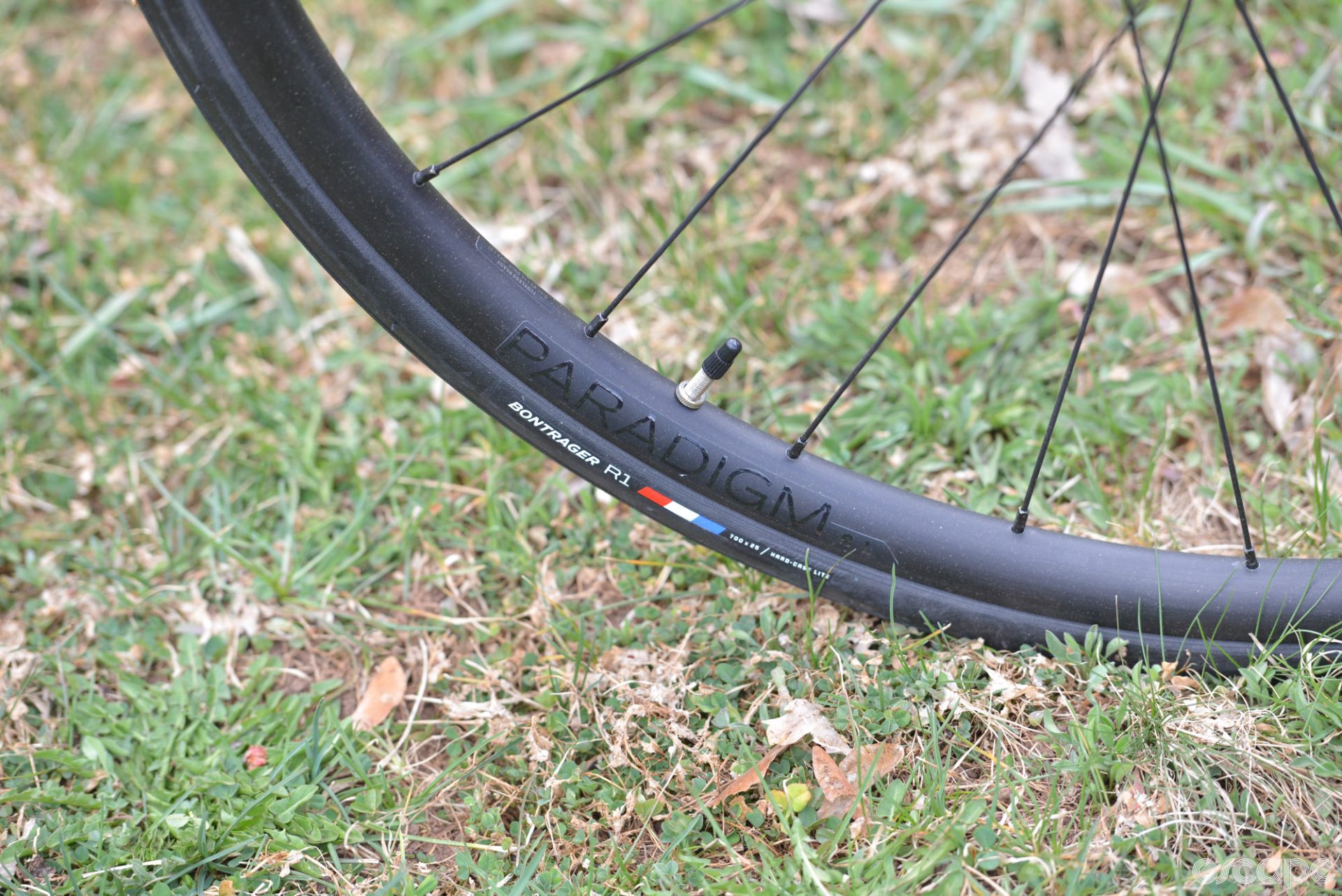
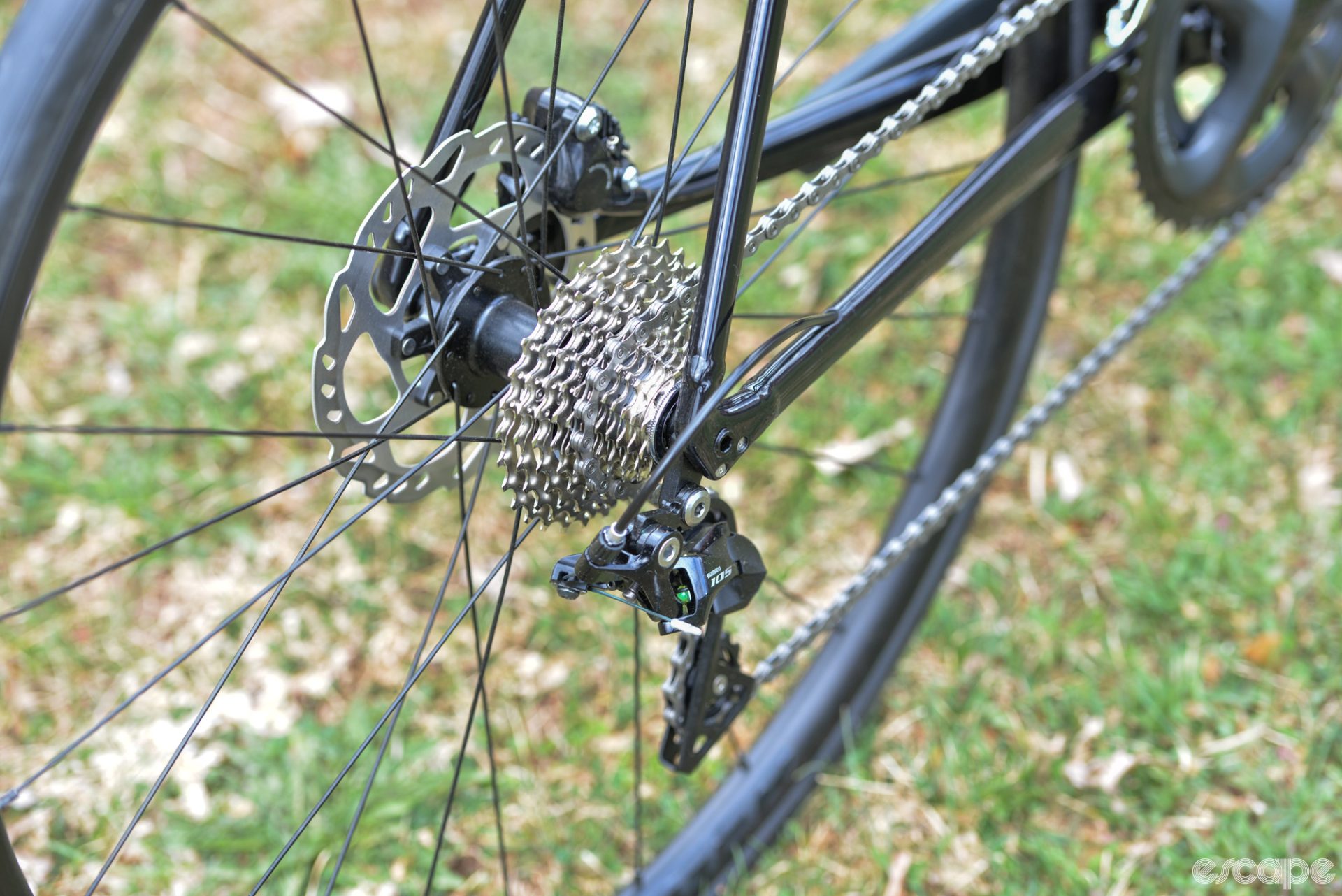
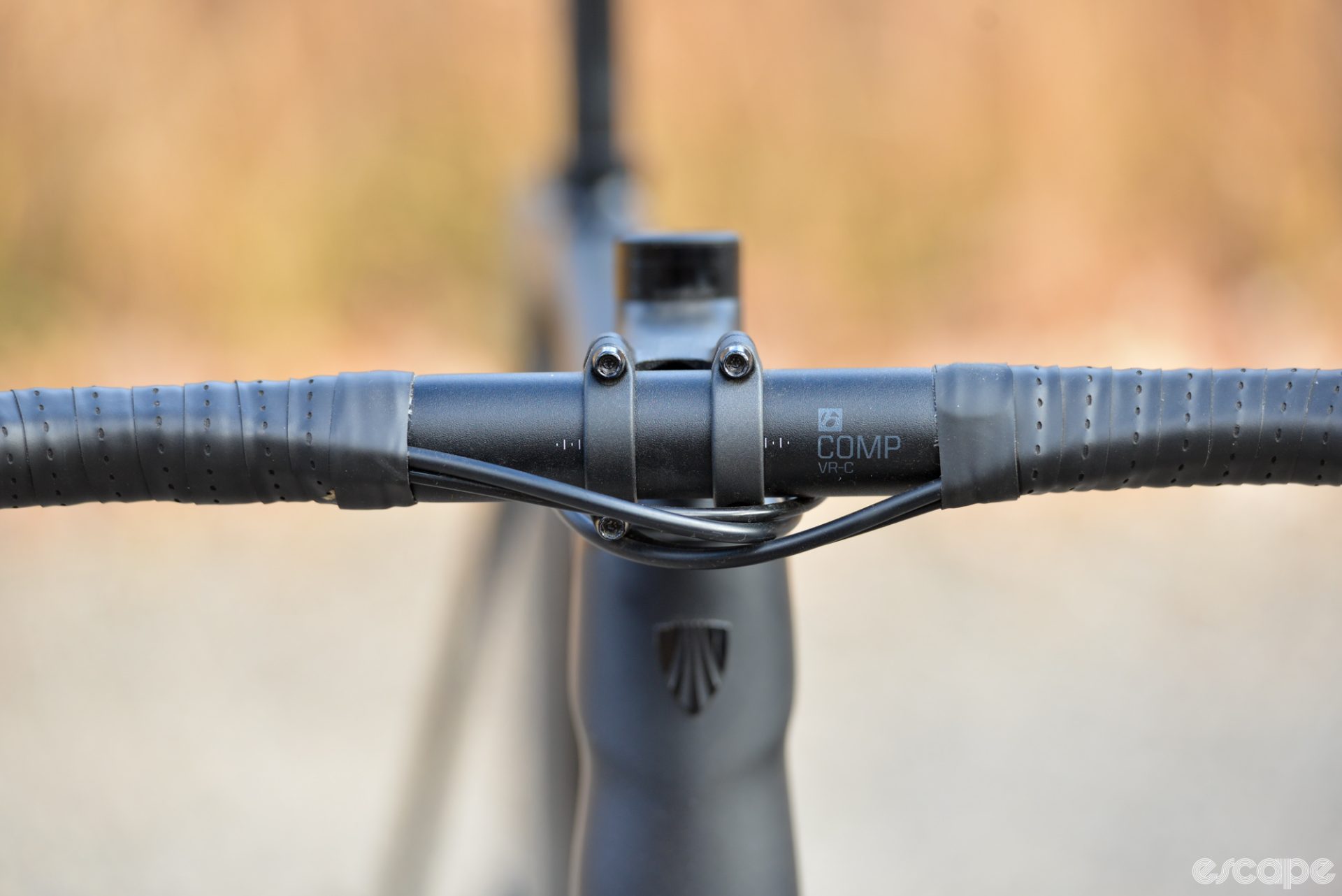

What did you think of this story?

